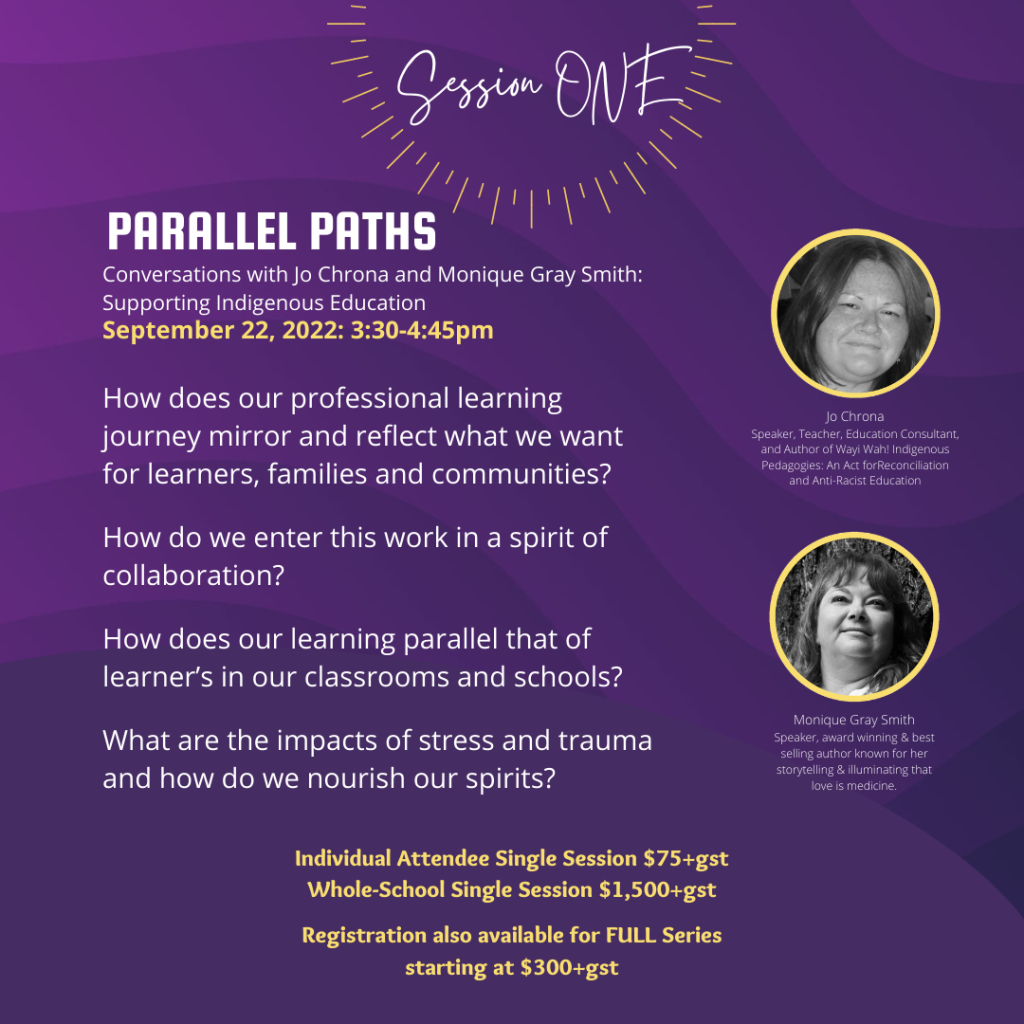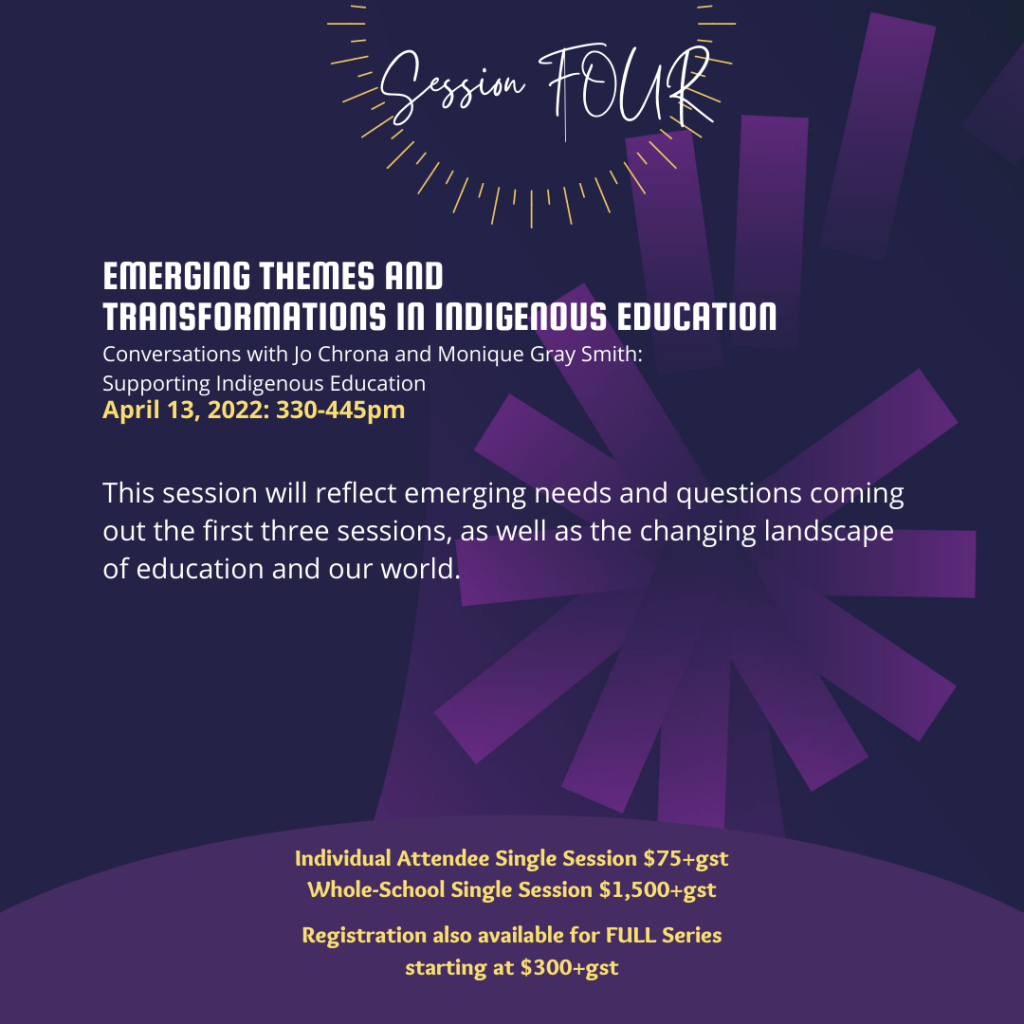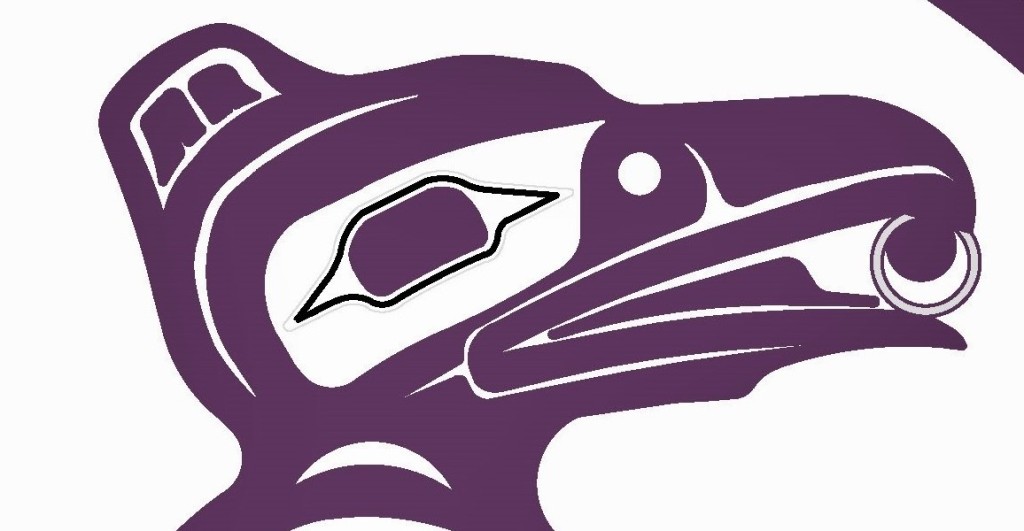Understanding just how pervasive various forms of racism are in education systems will be the continued work of the next few years. As we learn about, and begin to address, some types of systemic racism, such as the racism of low-expectations, we also need to be aware of other ways racism can be (and is) reflected in education. Epistemic racism refers to the valuing and devaluing of knowledge systems of specific cultures. In education, it is often reflected in what is mandated in curriculum and included in resources, and may be one of the most challenging forms of racism to address. Generally, Canadian education systems privilege and centre Euro-western knowledge systems, and this centering is so deeply embedded that some people think that the values and perspectives reflected by Western knowledge systems are universal, rather than cultural.
Education systems are microcosms of the larger society. When racism exists in society, we would be naïve to assume it is not also present in our education systems. We are challenged in Canadian education systems because these systems have taught us (explicitly or by omission) all that Indigenous knowledges do not exist, or are of less value than Euro-western knowledge systems.
In reality, Indigenous peoples hold an extensive wealth of knowledge, even if this knowledge has not always been recognized by post-industrial Euro-centric/Western cultures (Battiste, 2005). As we begin to unpack the epistemic racism that has rendered Indigenous knowledge systems invisible, more people will be able to understand the importance of these knowledge systems and perspective as necessary in both our learning environments, and in a 21st century world. Ideas that Indigenous knowledge and perspectives only had value historically and are not relevant to the world of today and tomorrow need to be challenged. Barnhardt and Kawagley (2005) write
“Indigenous peoples throughout the world have sustained their unique worldviews and associated knowledge systems for millennia, even while undergoing major social upheavals as a result of transformative forces beyond their control. Many of the core values, beliefs and practices associated with those worldviews have survived and are beginning to be recognized as having an adaptive integrity that is as valid for today’s generations as it was for generations past. The depth of [I]ndigenous knowledge rooted in the long inhabitation of a particular place offers lessons that can benefit everyone, from educator to scientist, as we search for a more satisfying and sustainable way to live on this planet.” (p.9)
However, before we can fully engage in understanding the inherent value in Indigenous knowledges, we need acknowledge that Euro-western knowledge systems are not the only cultural knowledge systems with value. And, we do not have to engage in a debate of one knowledge system or the other; there is room for complementary learning. In order for us to understand how that can happen we first need to be willing to create the space and make the time for us to learn what we need to learn. This will not happen quickly. It is not the result of having one conversation, reading one book, participating on one professional development session, or implementing a lesson. These actions can be a beginning, but they are only a beginning. The First Peoples Principles of Learning include more context about Indigenous knowledges, and their connections to local contexts, but I wanted to address here one of the common signals of epistemic racism – the misperception that the infusion of Indigenous knowledges reduces education standards.
In a society steeped in Indigenous-specific racist perspectives, it is not be surprising to many people that there is active resistance by some educators in K-12 and post-secondary institutes to the inclusion of authentic Indigenous knowledges and perspectives in all curricular areas.
A few years ago I was working with a group of educators who taught various subject areas at the secondary level and I was sharing resources that were available to respectfully integrate Indigenous knowledges in secondary classrooms. Many folks in the room were excited about this and wanted to spend time exploring the authentic Indigenous resources that had been developed for teachers in BC to use. A couple of educators however, made it plain that while they had to be there (as this was a mandated professional learning session) they did not see a value in even examining the resources. When asked why, one educator stated that his students would be going onto elite universities and colleges, so Indigenous knowledge is not going to be important for them. That statement reflected so much ignorance I was not sure where to begin to unpack it. At its heart was a blind assumption that there was nothing of value for his students to learn from Indigenous cultures. But it was also a statement that he also thought that there was nothing that he had to learn as well, that he had already learned everything that he ever needed to know.
I wish this was an isolated experience, that other teachers in the last couple of years have also not said that ”there is no such thing as Indigenous knowledge in Science or Math”, or that “Indigenous literature was not sophisticated enough to be taught in secondary English Language Arts courses”. But this is where we still are, and it shows how much more work we need to continue to do to challenge the narratives of Indigenous knowledges being “less than”. As much as I try to focus on the voices of thousands of other educators across the province who are embracing learning about Indigenous knowledges, and who are creating powerful and rich learning environments that reflect a value for Indigenous knowledges, my mind keeps going back to those who resist doing so. Whether the resistance comes out of fear of making a mistake, or out of racist perspectives, the results are the same – we will continue to have learners leave our education system with the same blind spots and ignorance about Indigenous peoples, cultures, and histories that has plagued Canada’s education systems.
As you might imagine, people who believe that the infusing Indigenous knowledge in learning environments means reduced learning standards, usually understand very little about Indigenous knowledge systems. What they think they know is often based on ignorance, or on just plain stereotyping and racist perspectives. It is important for us to remember that the K-12 and post-secondary education systems that most of us went through were prime examples of epistemic racism in action. Most non-Indigenous educators, and even some Indigenous educators, never had the opportunity to learn about Indigenous knowledge systems and perspectives.
Combatting epistemic racism in K-12 is vital for Indigenous learners and communities. One of the effects of the absence of Indigenous knowledges in learning environments is referred to as cognitive imperialism, a concept that describes the “white-washing” of the mind of Indigenous peoples that is the result of forced assimilation that comes when Indigenous knowledge systems are absent, denied, or devalued in the education systems (Battiste, 2013). This concept includes cultural minorities been led to believe that challenges they have been faced with are the result who they are, rather than the challenges being created by systemic racism. If we are committed to moving forward to create healthy and strong relationships between Indigenous peoples and Canada, then all of our education systems need to ensure that we are not reinforcing (intentionally or unintentionally) cognitive imperialism.
In addition to respectfully and meaningfully infusing Indigenous knowledges and perspectives in learning environments to be more responsive to First Nations, Métis and Inuit learners, we need to help each other understand how essential this is for non-Indigenous learners as well. Integrating (unappropriated) Indigenous knowledge systems and perspectives into all learning environments helps address and eliminate continuing colonial attitudes. In doing this, we help ensure that other Canadians do not grow up with the lack of knowledge and understanding of Indigenous peoples that permeated the systems that many of us came through. It is important for all learners to see the value for Indigenous peoples and cultures reflected in the physical environments of their schools, in their curriculum, and in their classroom resources. This is a vital part of Reconciliation through education.
Reflection Questions
- Where are you right now with your awareness of Indigenous knowledges and how they can be infused in our education systems? At the beginning, or continuing to learn? What steps will you take next?
- How would you respond to learners who ask why Indigenous knowledges are important in our classrooms and schools? To colleagues? To non-Indigenous parents/families?
Taking Action
- Seek out opportunities to learn more about how various forms of racism manifest themselves in other sectors of our society (i.e. health-care, policing, child-welfare).
- Honour diversity between and among Indigenous peoples, and avoid making generalizations based on partial or limited knowledge of some learners, families, or communities.
- Commit to working on uncovering your unconscious biases. Find people to be critical friends in your learning.
- Engage in self-reflection and examination of personal biases to help understand how these might contribute to systemic or epistemic racism.
- Periodically look back at the “Becoming Anti-Racist in Canada” graphic and do self-assessments of where you are, and how you have grown.
Moving from the Claiming of “New” Lands to “Discovering” New Knowledge
A different kind of example of epistemic racism has become evident in instances where Indigenous knowledge and/or perspectives are only perceived as important when validated by non-Indigenous people. This is also reflected in situations where non-Indigenous educators “discover” and claim as new or innovative, knowledge or perspectives that have already existed and been practiced in Indigenous cultures in Canada for thousands of years.
Let us look at the example of place-based or place-conscious learning – the awakening understanding about the value of connecting learners, and learning, to the land. Relationship to land and place is deeply rooted in many Indigenous cultural constructs as a foundation for teaching and learning. Living and learning is intimately attached to sense of place, connection to the land, and learning from the land. The community and natural environment are regarded as the “classroom”, and “land was regarded as the mother of all people” (Kirkness, 1998, p. 10).
In recent decades more educators in Canada have come to understand the learning potential for students learning on, and from, the land. Education systems have begun to embrace not just place-based learning, but understanding that the land is also our teacher, that we are informed by the land we are on. However, there has also been a tendency to treat this understanding by non-Indigenous peoples as a “new discovery” rather than acknowledging that it has been a foundation of Indigenous knowledge systems. I understand why this may happen; if non-Indigenous peoples have not had the opportunity to learn about Indigenous knowledge systems, then they may not realize that what is new to them is not new to Indigenous peoples. However, in the current contexts of this country, I would argue that it is the responsibility of all educators to be engaging in their learning about Indigenous knowledge systems. A part of the work of building a relationship with Indigenous peoples is explicitly honouring the knowledge that has been and continues to be foundational to so many Indigenous cultures.
I was talking with a small group of friends who are also Indigenous educators. We were discussing the recent changes to the British Columbia curriculum to enable educators to be more responsive to diverse learners and community needs, to focus on deeper learning of concepts, and emphasize the development of core competencies such as critical thinking, communication, positive personal and cultural identity and personal and social awareness and responsibility. We all acknowledged that the transformation that was being undertaken was long overdue and sorely needed to improve our K-12 system. However, one Indigenous district leaders noted with some exasperation, “I do wish though that [the Ministry of Education] would stop referring to all of this as ‘new’. It is new for them; it is not new for us. Sometimes it feels like someone stole my car, painted it a different colour, and is trying to sell it back to me. This transformation of the K-12 system is already going in the direction of what so many Indigenous peoples already know.”
So, why is it important to name the Indigenous knowledges that already exist, and think carefully when we label some thing as new or innovative when it is only new or innovative to non-Indigenous peoples? Because, when we ignore (out of ignorance or indifference) that the knowledge has already existed in Indigenous cultures prior to it being learned in non-Indigenous cultures, we contribute to the misperception that Indigenous peoples did not (do not) have robust knowledge systems, and that there was little value in Indigenous cultures. This kind of thinking (and acting) continues to erase Indigenous knowledge systems in Canada. If we are to move forward as a country, non-Indigenous education (and other) systems will need to disrupt and change perspectives and narratives that do not acknowledge the existence and value of Indigenous knowledges. Ignorance of that, intentional or otherwise, will only contribute to continued colonization.
Reflection Questions
- What damage is done to Indigenous cultures when non-Indigenous people claim knowledge and new or innovative when it is not new to Indigenous cultures?
- How do we stop framing knowledge and perspectives as new or innovative when they already exist in Indigenous cultures? What impact might this have on how society perceives First Nation, Inuit and Métis cultures?
Taking Action
- Commit to your continued learning about Indigenous peoples, cultures, and histories.
- Check Indigenous education department websites in school districts to see what locally developed resources are already available.
- Check with other local education organizations (Friendship Centres, Indigenous education departments of local post-secondary institutes etc.) to see if there are other collaboratively developed local First Nations, Inuit or Métis resources. As mentioned previously, if no resources are available from local communities, think about widening concentric circles.
- Connect with local First Nations (or in other parts of Canada, connect with the holders of the local traditional territories) to learn about what resources are available to learn about local knowledges.
- Begin or continue learning by reading one of the resources listed below. Look at references in those readings and continue your learning.
- Connect with local Indigenous communities, especially the people on whose traditional territory a school or school district sits to determine what priorities for learner resources the community leadership has.
- Create and /or support opportunities for educators to work collaboratively with local First Nations, Inuit or Métis communities (on whose traditional territories the schools or districts operate) to develop learner resources. Ensure that schools and districts have policies to protect Indigenous ownership of knowledge shared in the collaborative creation of resources for schools.
Read, Listen, or Watch
- Augustine, D., Chrona, J., Hodgson, C. & Williams, L. (2018) Meaningful reconciliation: Indigenous knowledges flourishing in B.C.’s education system for the betterment of all students. Organisation for Economic Co-operation and Development.
- Kawagley, A.O., & Barnhardt, R. (1998). Education Indigenous to Place: Western Science Meets Native Reality.
- Barnhardt, R., & Kawagley, A. O. (2005). Indigenous knowledge systems and Alaska Native ways of knowing. Anthropology and Education Quarterly, 36(1), pp. 8-23.
- Battiste, M. (2002). Indigenous knowledge and pedagogy in First Nations education: A literature review with recommendations.
- Battiste, M. (2005). Indigenous knowledge: Foundations for First Nations.
- Battiste, M. (2013). Decolonizing education: Nourishing the learning spirit. Saskatoon, SK, Canada: Purich Publishing Limited
- Cajete, G (1994). Look to the Mountain. Skyland North Carolina: Kivaki Press
- Davidson, S. F., & Davidson, R. (2018). Potlatch as pedagogy: Learning through ceremony. Winnipeg, Manitoba: Portage & Main Press
- Justice, D. H. (2018). Why Indigenous literatures matter.Waterloo, Ontario, Canada: Wilfrid Laurier University Press
- Michell, H., Vizina, Y., Augustus, C., &Sawyer, J. (2008). Learning indigenous science from place: Research study examining indigenous-based science perspectives in Saskatchewan First Nations and Métis community contexts. Aboriginal Education Research Centre, University of Saskatchewan, Saskatoon, Canada.
- Nicol, C., Archibald, J. & Baker, J. (2012). Designing a model of culturally responsive mathematics education: Place, relationships and storywork. Mathematics Education Research Journal, 25.
- Snively, G., Wanosts’a7 Williams, L., (2016) Knowing Home: Braiding Indigenous Science with Western Science Book 1
- Wilson, S. (2008). Research is ceremony: Indigenous research methods. Black Point, NS: Fernwood Publishing
- The following teacher resource guides are designed to support respectful integration of Indigenous content and perspectives into learning environments, and can also be used to help educators learn more about Indigneous knowledges. While they are intended to be used along side locally developed resources, they can still be used in the absence of any currently available local resources. Designed for BC, they also contain some material that could be applicable in other Canadian provinces and territories, and could serve as models for the development of authentic Indigenous resources in education jurisdictions outside of BC. All are available at the First Nations Education Steeering Committee under Learning First Peoples
- English First Peoples 10-12
- Math First Peoples
- Science First Peoples 5-9
- Science First Peoples, Secondary
- BC First Nations Land, Title and Governance
- Indian Residential Schools and Reconciliation Grades. 5, 10, 11/12
- In Our Own Words, Brining Authentic First Peoples Content to the K-3 Classroom
- First Nations Career Role Models and Career Journeys Video and Poster Series
References
Barnhardt, R., & Kawagley, A. O. (2005). Indigenous knowledge systems and Alaska Native ways of knowing. Anthropology and Education Quarterly, 36(1), pp. 8-23. Retrieved from http://ankn.uaf.edu/Curriculum/Articles/BarnhardtKawagley/Indigenous_Knowledge.html
Battiste, M. (2005). Indigenous knowledge: Foundations for First Nations. Retrieved from: https://www.researchgate.net/publication/241822370_Indigenous_Knowledge_Foundations_for_First_Nations
Battiste, M. (2013). Decolonizing education: Nourishing the learning spirit. Saskatoon, SK, Canada: Purich Publishing Limited
Kirkness, V. (1998). Our peoples’ education: Cut the shackles; cut the crap; cut the mustard. Canadian Journal of Native Education Canadian Journal of Native Education, 22(1), 10-15.












 In recent years I have noticed a tendency for some educators to shy away from talking about the need to support the achievement of Indigenous learners.
In recent years I have noticed a tendency for some educators to shy away from talking about the need to support the achievement of Indigenous learners.